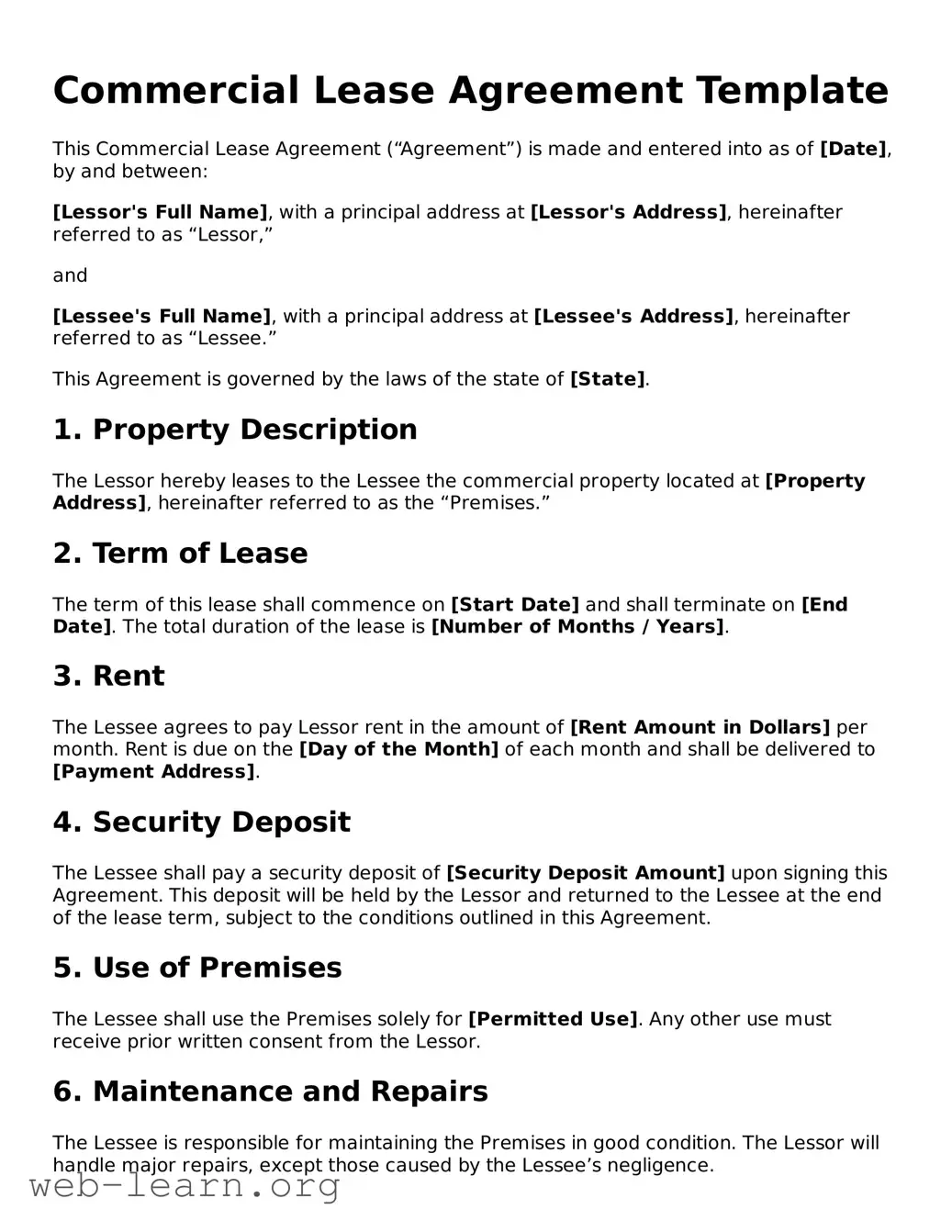Commercial Lease Agreement Template
This Commercial Lease Agreement (“Agreement”) is made and entered into as of [Date], by and between:
[Lessor's Full Name], with a principal address at [Lessor's Address], hereinafter referred to as “Lessor,”
and
[Lessee's Full Name], with a principal address at [Lessee's Address], hereinafter referred to as “Lessee.”
This Agreement is governed by the laws of the state of [State].
1. Property Description
The Lessor hereby leases to the Lessee the commercial property located at [Property Address], hereinafter referred to as the “Premises.”
2. Term of Lease
The term of this lease shall commence on [Start Date] and shall terminate on [End Date]. The total duration of the lease is [Number of Months / Years].
3. Rent
The Lessee agrees to pay Lessor rent in the amount of [Rent Amount in Dollars] per month. Rent is due on the [Day of the Month] of each month and shall be delivered to [Payment Address].
4. Security Deposit
The Lessee shall pay a security deposit of [Security Deposit Amount] upon signing this Agreement. This deposit will be held by the Lessor and returned to the Lessee at the end of the lease term, subject to the conditions outlined in this Agreement.
5. Use of Premises
The Lessee shall use the Premises solely for [Permitted Use]. Any other use must receive prior written consent from the Lessor.
6. Maintenance and Repairs
The Lessee is responsible for maintaining the Premises in good condition. The Lessor will handle major repairs, except those caused by the Lessee’s negligence.
7. Termination
Either party may terminate this Agreement by providing [Number of Days] days' written notice to the other party prior to the expiration of the lease term.
8. Governing Law
This Agreement shall be governed by the laws of the state of [State].
9. Miscellaneous
- This Agreement constitutes the entire agreement between the parties.
- No modifications shall be made unless in writing and signed by both parties.
- Should any provision of this Agreement be found unenforceable, the remaining provisions shall continue in full force.
IN WITNESS WHEREOF, the parties hereto have executed this Commercial Lease Agreement as of the day and year first above written.
Lessor's Signature: _________________________
Date: ________________
Lessee's Signature: ________________________
Date: ________________
